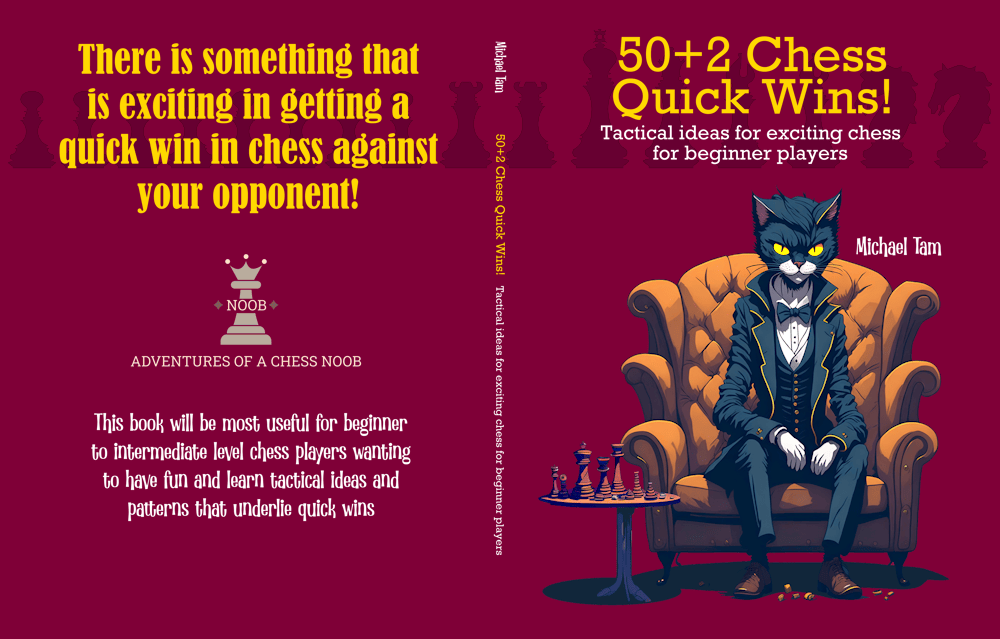
Four Knights Italian | FUN WITH BLACK! 🤩👍
#fourknights #openingtactics #history
About a week ago, I had this really fun and tactical game of the Four Knights Italian with Black (1. e4 e5 2. Nf3 Nc6 3. Nc3 Nf6 4. Bc4). This was an unrated daily game against a new friend and subscriber from the UK @nathanru23119 who asked whether I would be willing to give some trips after a game.
The interesting thing about this game is that they actually played really well for someone rated just under ELO 900, with the single exception of something that I’ve written about previously. In the Four Knights Italian, the critical move for Black on turn four is (4… Nxe4), which is not an intuitive move at the beginner level for either side.

![]()
However, once played, the next moves follow automatically (5. Nxe4 d5), and with the fork, the dynamic of the game changes completely! According to the Lichess community database, Black wins 59% to White 37% at this position, and more than that, White finds the correct response (6. Bd3) only 17% of the time overall, and only 10% of the time for low-rated players! 😲
In the game, White plays the seemingly aggressive and tactical (6. Bb5), pinning my c6-knight to the king. However, this is a blunder [0.00 → -2.2] even though in a few moves, White seems to win back all the material!
![]()
A historical digression:
The earliest example of (4… Nxe4) against the Four Knights Italian in the massive LumbrasGigabase was by none other than first world chess champion, Wilhelm Steinitz (1836-1900). I see Steinitz as an inflection point in chess. He pioneered, advocated, and won using the then new positional style, revealing it with grandeur in 1873 by winning the First International Vienna Chess Congress. It was this chess event that second-place winner, Joseph Blackburne gained his magnificent nick name, der Swartze Tod or in English, “The Black Death”! This approach was ultimately accepted and adopted by later chess players, ushering the transition from the Romantic era to what we now call the Classical era of chess. However, for a significant part of his chess career, Steinitz was a master of the romantic style of aggressive chess, and perhaps, the best of his generation.

![]()
Indeed, Steinitz’s (4… Nxe4) was played in a casual game two years after he revealed his positional approach (Seymour — Steinitz, 1875, London) and is a masterpiece of chess romanticism! Take note of Steinitz’s multiple piece sacrifices starting with the rook on turn 15. The chess.com analytic engine rates Steinitz’s moves 15 to 18 as: brilliant, excellent, brilliant, brilliant! 🤯🤩👍
![]()
After White’s (6. Bb5), Black wins back the knight with (6… dxe4) and here White played down a seemingly logical sequence of moves, starting with by trading their bishop for my knight (7. Bxc6+ bxc6), removing the defender to the e5-pawn allowing (8. Nxe5). White has regained material balance and so should be fine right?
No! In fact, the evaluation is almost [-4], and the reason is that Black has (8… Qg5!), which is a fork of White’s e5-knight and g2-pawn! White guards the knight with (9. d4) and thus succumbs to (9… Qxg2)!
My opponent with the White pieces surprised me with a fascinating counterattack (10. Qh5) threatening a mating attack starting with Qxf7+. Here, I thought for a long time before making my next move and wondered whether I might have made a mistake somewhere! However, I realised after calculating carefully, that White had no mating attack after I defended my f-pawn with my light square bishop through Be6!
Stockfish agreed evaluating White’s romantic Qh5 a mistake [-4 → -7], but I think this was potentially a great tactical manoeuvre by my opponent! In a time control that wasn’t daily, I can’t say that I wouldn’t have been spooked by the counter-offensive and potentially made an inaccurate move in response!
In the game, I was unperturbed and thus came a chomping down on material and manoeuvring to get a win! I could ignore White’s counterattack by a move by capturing White’s rook for free (10… Qxh1+). And then, the neutralisation of White’s counterattack with (12… Be6). And then, chasing White’s queen (12… g6 and 13… Be7) and finally, dislodging White’s e5-knight (14… f6). Unfortunately for White, their centrally placed e5-knight was not only pivotal to their counterattack, but also defence.
My queen could not give a winning attack on her own. After White’s knight was forced to move (15. Nxc6) and relinquish the control of the c4 square, this allowed (15… Bc4+), bringing a second piece into the attack of White’s king – the beginning of the end!
All the following moves were attacks on White’s king, corralling the king and opening the centre with captures and clearance sacrifices. After (23… Rf8+), White resigned as the only legal move was to avoid the checkmate for a single turn with a queen sacrifice. Good game, GG!
I’ve commonly seen declarations that beginner players shouldn’t waste time learning any opening theory. I think, however, it’s important to understand this within a context and it’s a matter of balance. Only learning theory and memorising countless computer lines of an opening is unhelpful, especially if this doesn’t come with learning the ideas, principles, and tactics of the opening. It also doesn’t sound like much fun! However, the big takeaway from this game is that learning some opening theory, especially of the critical common positions you play should be acknowledged as commonsense and inescapable.



